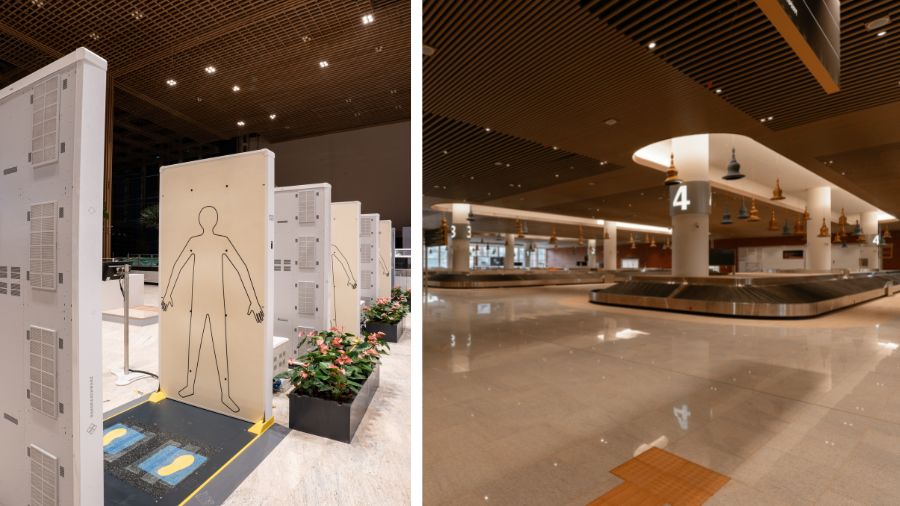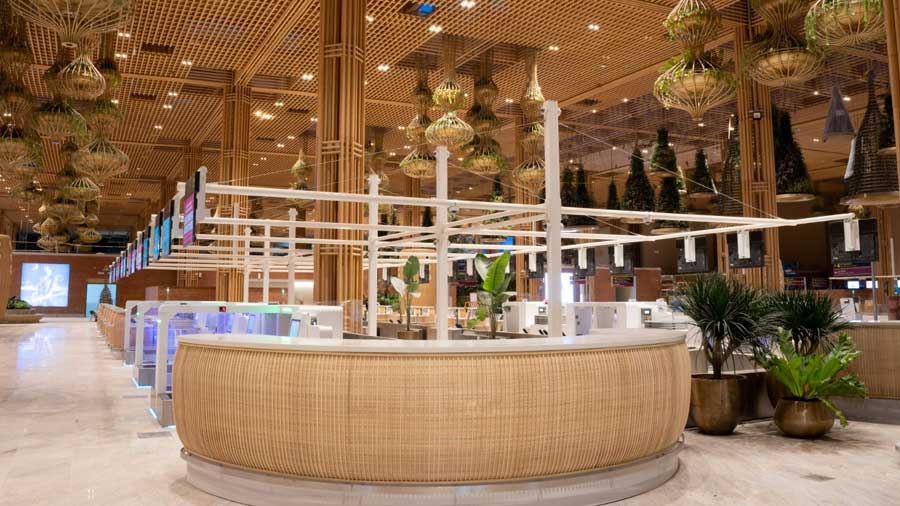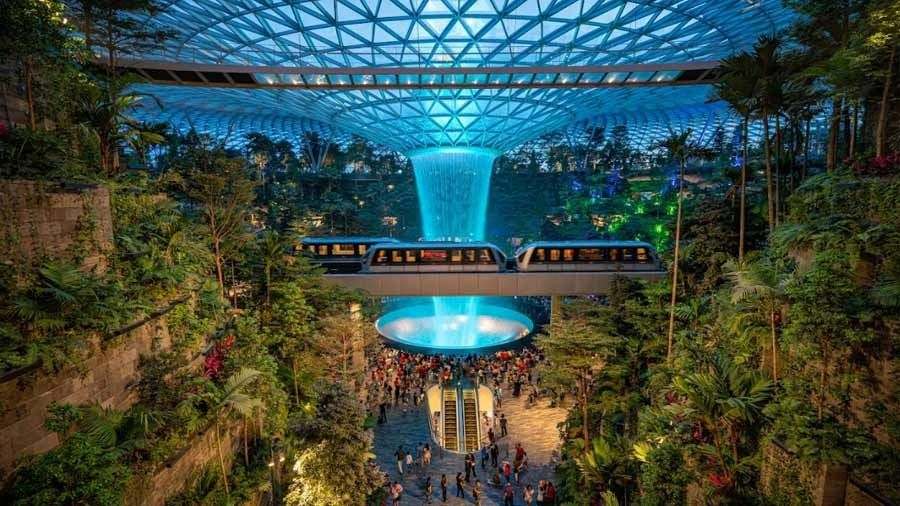I’ve witnessed the transformation from old Bangalore to new Bengaluru. A time that saw the city transition from India’s ‘Garden City’ to ‘Silicon Valley’. It put tremendous pressure on the city’s infrastructure. The new Bengaluru airport that opened in the late 2000s is part of this transition and has coincided with the city’s rise as one of the world’s tech hotspots. But that was almost 15 years ago. While Terminal 1 of the Kempegowda International Airport might be one of India’s glitziest airports, it’s clearly bursting at its seams with an enormous spike in passenger numbers. It’s why Terminal 2 could not have been better timed. This isn’t just a modern terminal but a fitting tribute that all of us with an old Bangalore connection can be proud of.
Terminal in a garden

Over six lakh plants sourced from multiple ecological habitats in India are housed in the new terminal's gardens
Singapore’s Changi Airport remains my favourite airport in the world. One of the key ingredients of its appeal are the unique gardens and splash of green that make it an urban oasis. It’s easy to forget that it’s also an airport. That’s the same feeling I experienced during an exclusive sneak peek of the new Terminal 2. When you do get here, you’re likely to keep looking up. This is a hanging garden like we’ve probably never seen before in India. It’s the sheer scale of these hanging gardens that might leave you spellbound. It also reinstates the city’s Garden City moniker. The airport is home to over six lakh plants sourced from multiple ecological habitats in India. If you’re a number cruncher then here you go – 620 endemic plants, 7,700 transplanted plants, 150 palm species… the list goes on.
Geared to fly
In January, Star Air, a regional airline, became the first airline to use the all-new T2. On February 15, Air Asia will move all its domestic arrivals and departures to Terminal 2 becoming the first national carrier to bring passengers to this greenfield terminal.
Over the next few months, Terminal 2 will also become the default terminal for all international flights and will also see other major domestic airlines shift operations from Terminal 1. Indigo will be one of the major players that will continue to operate from T1. Sustainability is a big part of the airport’s pitch. Terminal 2 is recognised as the largest terminal in the world to be pre-certified with a Platinum LEED rating by USGBC (US Green Building Council) prior to commencing operations. One reason why the airport made it to CNN’s list of The new buildings set to shape the world in 2023.

The airport is scaling up operations from February 15
Art affair
Mumbai’s Terminal 2 has set the benchmark for its art program. It’s wonderful to see newer airports in India focus on art and also make it more accessible. Like Andy Warhol once said - “I don’t think art should be only for the select few. I think it should be for the mass of the people”. SOM (Skidmore, Owings & Merrill) the New York-based firm that designed Mumbai’s T2 are also the architects that have envisioned Terminal 2 in Bengaluru.
The T2 Art Programme is inspired by Bharata’s Naurasa mentioned in the Natyashastra. The terminal features 60 artworks by 43 artists selected from Karnataka and India. It was wonderful to see a collection of bronzes from Karnataka at the airport made possible with T2’s tie-up with the state archaeological department. But it is the massive ‘Bird’s Eye View’ by Madhvi Subrahmanian that caught my eye. This unique installation in the check-in hall features aerial views (with geographical coordinates) of some of the key airports across the world that Bengaluru is connected with.

The terminal was designed with sustainability in mind and features bamboo frames and rattan design elements
Airports should be happy spaces
Airports can be intimidating, especially during peak hours. Security checks can unsettle first-time fliers as well as seasoned, frequent fliers. T2 aims to ease the process with a large number of check-in kiosks that also include self-check-in booths. A wide array of retail and dining options will add to the experience. Quite a few experiential stores from brands like Hidesign and Swarovski are operational, the new terminal will also see the India debut of global F&B brands like Wolfgang Puck and PF Chang’s in the coming weeks. But more than all that, it’s the airport’s green cover that is its defining architectural feature and sets it apart. These gardens combine with the large bamboo frames and rattan design elements to create a vibe that’s likely to calm even the most reluctant fliers.

